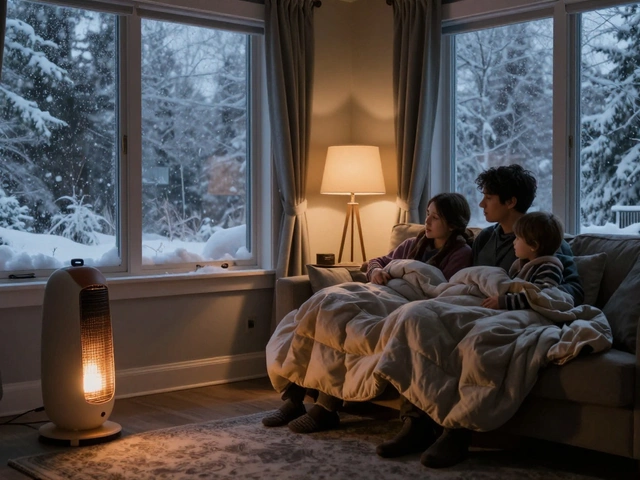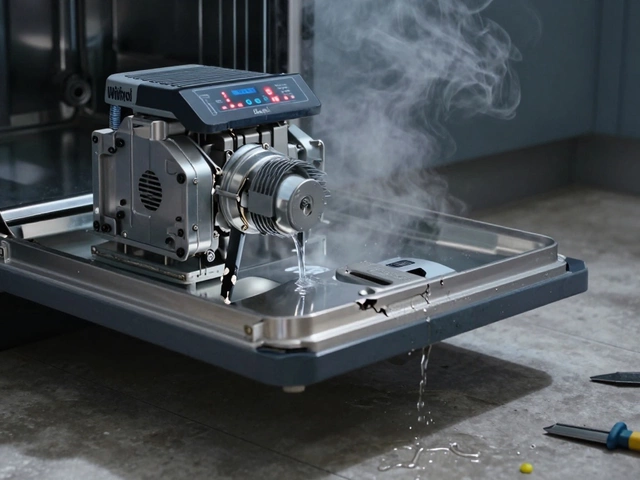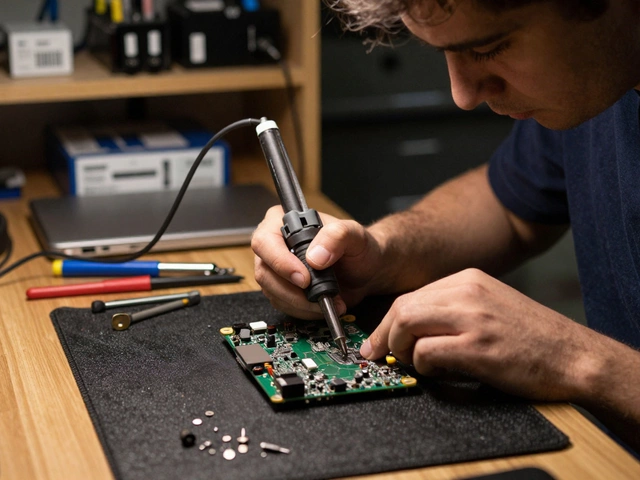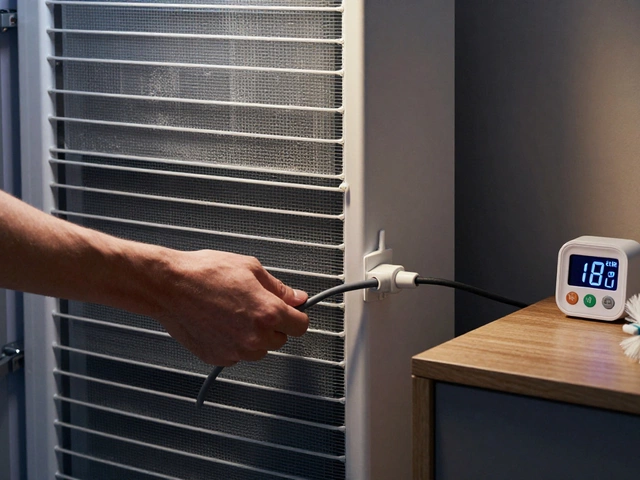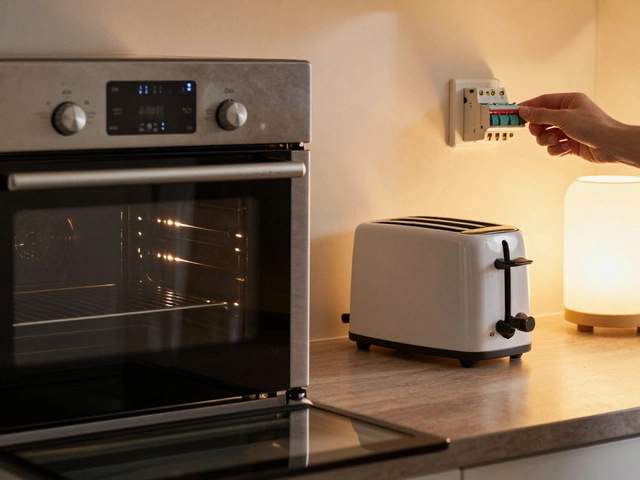So, you get ready for a hot shower and—bam—cold water. You head over, push the reset button on your water heater, and maybe it works for a while. Why does this keep happening? Water heaters aren’t supposed to need constant resets. That’s a big red flag something’s up.
Most of the time, the reset button (some folks call it the 'high-limit switch' or the 'energy cut-off switch') is a safety device. If the water gets too hot, it trips. If it’s tripping over and over, it isn’t doing it for fun—it’s telling you the system has an issue that needs fixing, not just a quick button press.
Knowing the possible reasons behind these resets saves you time and keeps you safe. Sometimes it’s a busted thermostat, a broken heating element, or even bad wiring. Other times, it’s something more serious, like electrical shorts or faulty high-limit switches. Even something as sneaky as a stuck relay can ruin your morning routine.
Instead of guessing or hoping it'll fix itself, you need to know what’s happening. A water heater that needs regular resets could, in the worst-case scenario, be a fire risk. Don’t let it get to that point. There are steps you can take to spot the problem—and some you can sort yourself before spending money on a repair tech.
- What's Going Wrong When You Keep Resetting
- Usual Suspects: Common Parts That Fail
- DIY Checks Before You Call A Pro
- When To Get Help And What To Expect
- Prevention Tips To Avoid Repeat Resets
What's Going Wrong When You Keep Resetting
If you find yourself constantly resetting your water heater, you're not alone. This is actually one of the most common complaints from homeowners dealing with unreliable hot water. The problem usually centers around the reset button tripping too often, but the real question is: why?
Here’s the deal: water heaters have a built-in safety switch—a thermostat limit switch—that’s supposed to pop only when the water temperature gets dangerously high. If it’s tripping all the time, that means it’s either doing its job (because something is overheating) or it’s failing (because of something like loose wiring or a broken part).
- Overheating water – This can happen if your thermostat is broken or set too high. When the water keeps getting hotter instead of shutting off, the reset button trips as a last defense against scalding water or damage.
- Bad thermostat – Water heaters have upper and lower thermostats, and if one fails, the system gets confused, leading to either no hot water or water that’s way too hot.
- Malfunctioning heating element – If these start shorting out, they can keep heating your tank even when they shouldn’t.
- Electrical issues – Loose or burnt wires deliver bad power, sometimes sparking the reset over and over.
- Failing high-limit switch – Sometimes the switch itself is just old or defective, so it pops even when the temperature is fine.
Most failures fall into one of these categories. About 70% of frequent reset calls end up being thermostat or heating element issues, while a smaller chunk is due to failing wiring or switches (based on a 2023 survey of home repair services).
| Common Cause | Estimated Frequency (%) |
|---|---|
| Faulty Thermostat | 40 |
| Bad Heating Element | 30 |
| Electrical Issues | 15 |
| Failing High-Limit Switch | 10 |
| Other Causes | 5 |
If this keeps happening, don’t just keep hitting the button and hoping for the best. Every time the reset trips, it’s basically your water heater waving a red flag that something’s not right. Ignoring it just lets the problem get worse, and could even lead to bigger risks down the road, like leaks or fire hazards.
Usual Suspects: Common Parts That Fail
If you keep resetting your water heater, certain parts should shoot straight to the top of your suspect list. Most fixes trace back to a handful of troublemakers inside the unit.
The thermostat usually tops the list. This part tells your water heater when to turn the heating elements on and off. When it fails, it can cause overheating or just plain failure to heat up. Either scenario will set off that reset button—sometimes as often as every day.
The heating elements themselves are another biggie. If they’re shorting out or failing, they can cause the water to overheat or even trip your breaker. You’ll notice inconsistent hot water or none at all. Sometimes, you’ll hear sizzling or popping, which means it’s time to look closer.
Wiring inside the tank isn’t immune either. Loose, damaged, or burned wires can cause all sorts of weird issues. A frayed wire can cause the reset to trip as a safety, and in more serious cases, could risk an electrical fire.
And don’t forget the high-limit switch (the thing behind the reset button). If the switch itself goes bad, it gets hair-trigger sensitive and pops even when things are running cool. This switch is a safety device—when it wears out, it causes a lot of unnecessary resets.
The table below shows the most common culprits and the problems they cause:
| Part | Common Issue | Typical Symptom |
|---|---|---|
| Thermostat | Stuck or inaccurate reading | Water too hot or not hot enough, frequent resets |
| Heating Element | Short circuit, burnout | No hot water, breaker trips, sizzle sound |
| High-Limit Switch | Worn or faulty sensor | Reset needed over and over |
| Wiring | Loose or burnt connections | Erratic heater behavior, frequent resets |
There are other less-common parts that might also go, but these four are the most likely to be the reason you’re playing the reset game. The thermostat and heating element especially get a workout over the years and are the most commonly replaced parts in residential units.

DIY Checks Before You Call A Pro
If your water heater keeps cutting out, don’t panic or assume the worst just yet. A lot of the common causes can be checked without special tools or skills—you just need to stay safe and follow a logical process. Rule number one: always turn off the power at the breaker before you start poking around. Working on a live appliance is no joke.
Here’s what you can actually check on your own:
- Check the thermostat setting: Too high? Turn it down. Most water heaters work best around 120°F (49°C). Sometimes cranked-up settings cause the cut-off switch to keep tripping.
- Listen for clicking or buzzing: If you hear weird sounds, it could mean a stuck relay or a failing heating element.
- Inspect for visible leaks or rust: Any water underneath or rust on the tank means internal parts might be shorting out or overheating.
- Look for loose or burnt wires: Remove the panel, and if you see blackened wires or smell burning plastic, that’s a clear danger sign. Don’t try to fix these—just spot them and call for help.
- Test the reset button: Press and release firmly. If it clicks and heater fires up but then trips again soon after, your reset button is probably doing its job, but something else is broken.
Sometimes a dusty or blocked thermostat can throw things off. If you’re comfortable, you can carefully vacuum around it or gently wipe it down—just don’t knock anything loose.
It also helps to compare your hot water usage to what the heater can handle. Here’s a quick table showing average household water heater sizes and what they realistically can keep up with:
| Tank Size (gallons) | Showers Back-to-Back | Loads of Laundry |
|---|---|---|
| 30 | 1-2 | 1 |
| 40 | 2-3 | 1-2 |
| 50 | 3-4 | 2 |
If you’re pushing your water heater beyond its limit, it can trip on safety. But if your hot water just up and vanishes way before that, something’s wrong inside.
Bottom line: don’t just reset and hope. Do a quick safety check. A little troubleshooting now can save you an emergency later—and sometimes even a bunch of cash.
When To Get Help And What To Expect
If you’re resetting your water heater more than once a month or you notice other weird stuff like flickering lights, burning smells, or leaks, it’s time to call a pro. These aren’t small hiccups—they’re your water heater sending out an SOS. Don’t ignore them. Safety always wins over a DIY gamble, especially when you’re dealing with electricity or gas.
Licensed plumbers and electricians see these issues all the time. Here’s what might happen when you make the call:
- The tech will cut power to the unit right away. No one pokes around inside a live appliance—ever.
- They’ll pop open the access panels—expect them to check wiring, thermostats, heating elements, and look for scorch marks or corrosion.
- With electric models, a multimeter comes out to check for bad elements or faulty thermostats. For gas units, it’s all about testing the thermocouple or gas valve.
- They’ll clear any sediment or mineral build-up, which sometimes triggers overheating or resets.
- If it’s unsafe, like exposed wires or serious tank leaks, you might get the dreaded “needs replacement” talk. Be ready for honest advice.
You don’t have to guess what this is going to cost, either. Check out this quick rundown on average repair prices from real industry data (2024):
| Repair Type | Average Cost (USD) |
|---|---|
| Heating Element Replacement | $200 – $300 |
| Thermostat Replacement | $150 – $250 |
| Reset Switch/High-Limit Replacement | $100 – $200 |
| New Water Heater (Standard/40-50 gal) | $900 – $2000 |
Most repair visits wrap up in under two hours if it’s a common part. Full replacements may take half a day, especially for tankless or larger models. And don’t be shy—ask the tech to show you what went wrong. The best ones don’t just fix things, they show you how to avoid a repeat emergency.
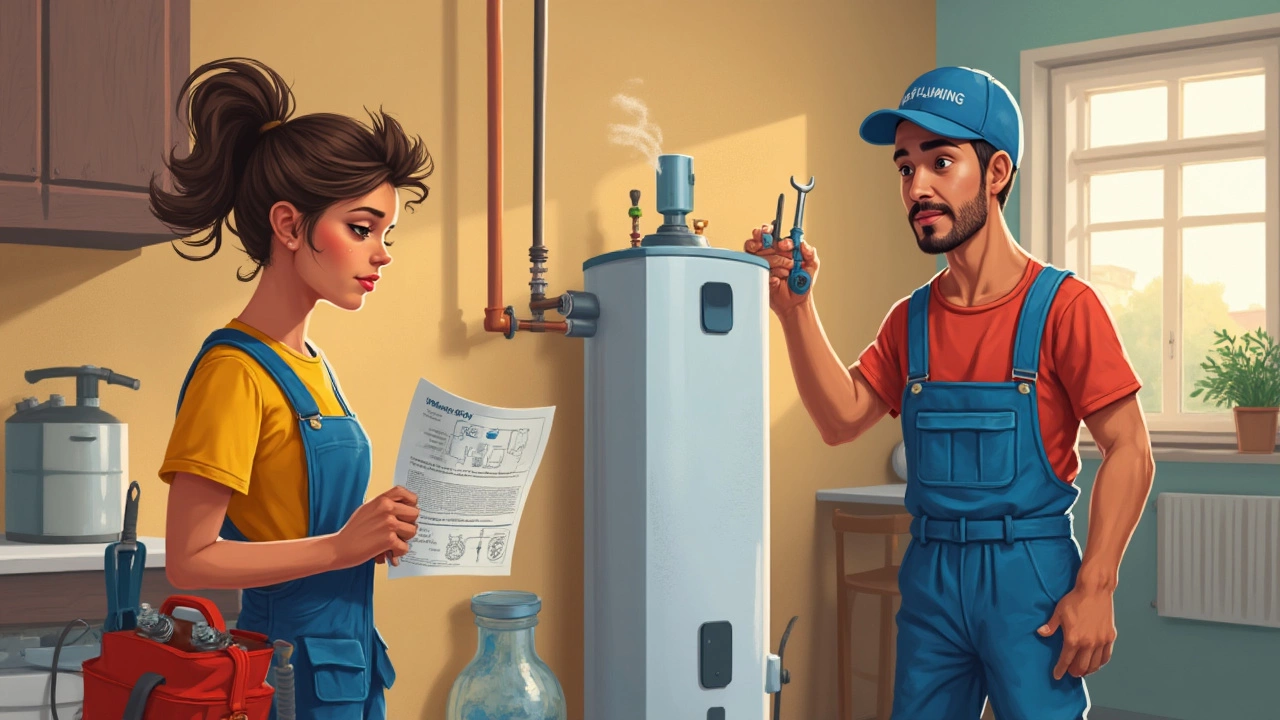
Prevention Tips To Avoid Repeat Resets
If your water heater keeps demanding resets, it’s time to get ahead of the problem. Dodging future resets is a mix of small habits, regular upkeep, and knowing when to swap out old parts. Here’s what actually makes a difference.
- Water heater maintenance isn’t just a buzzword. Most manufacturers say to flush your tank once a year to clear out sediment. Letting gunk collect at the bottom wreaks havoc, making the thermostat or heating element work too hard and overheat, which trips that pesky reset button.
- Check the thermostat setting. The sweet spot is usually between 120°F (49°C) and 130°F (54°C). Go higher, and you risk overheating and scalding—not to mention repeated resets.
- Look for burned or loose wiring at the heater’s panel. Janky wiring can cause the electrical parts to overheat. Tighten up anything loose, but cut the power at the breaker box first. Basically, no one likes fried wires or surprise shocks.
- Replace cheap or old thermostats and heating elements before they cause trouble. Swapping in new parts every 5-7 years is a safe bet—kind of like getting a new battery for your smoke detector before it starts beeping at 2 a.m.
- Keep an eye on the pressure relief valve. If it leaks or looks crusty, swap it out. Too much pressure in the tank means extra stress, which can push the reset to trip more often.
Here’s a quick look at why homeowners call pros for water heater trouble the most:
| Cause | Percent of Service Calls |
|---|---|
| Heating element failure | 36% |
| Thermostat/limit switch issues | 28% |
| Wiring/electrical faults | 18% |
| Sediment buildup | 13% |
| Other (incl. valve, leaks) | 5% |
The moral? Regular maintenance always beats emergency resets. If your heater’s getting up there in age (over 10 years), or if you keep fighting cold showers, it might be better (and cheaper in the long run) to cut your losses and upgrade to a newer and safer model.

